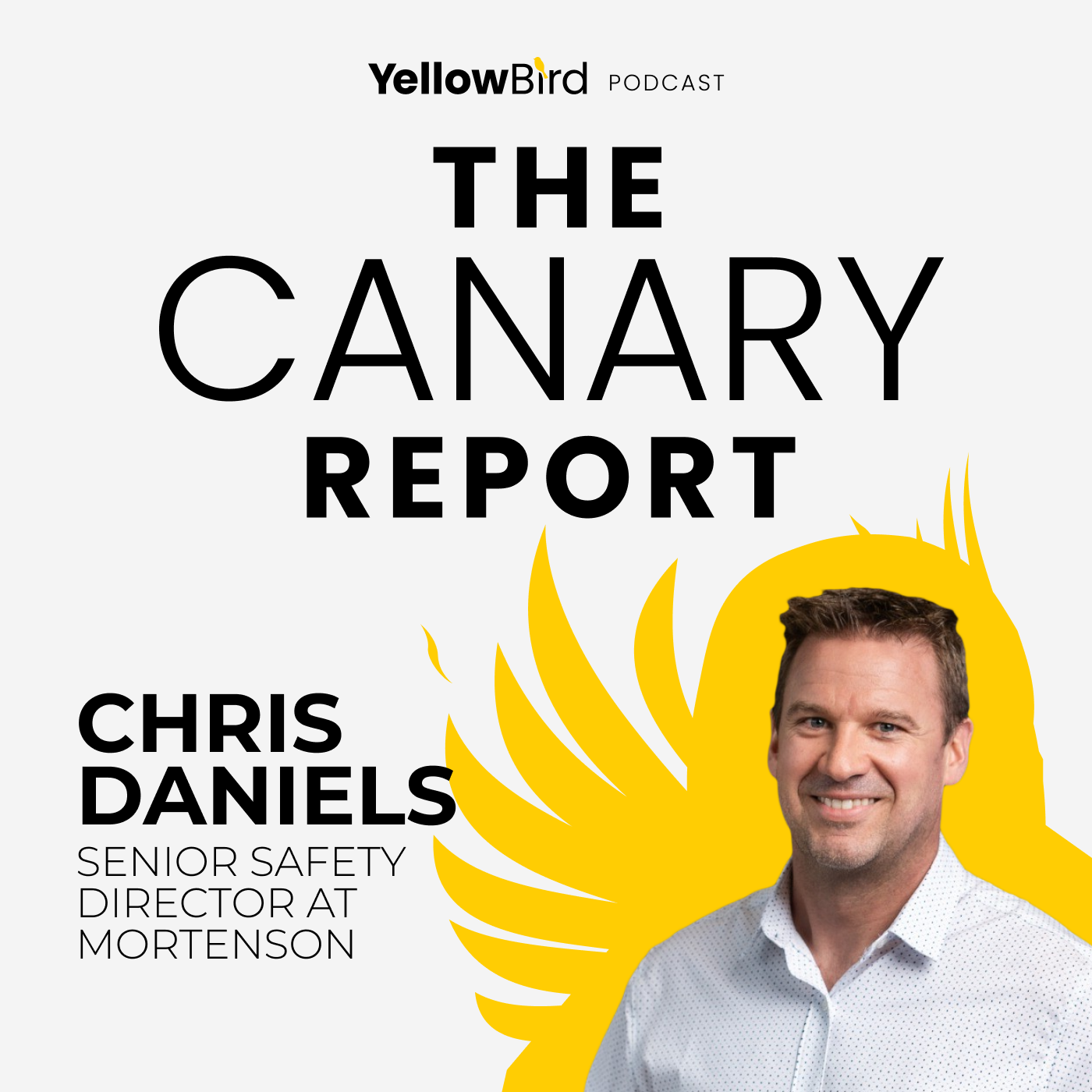Chris Daniels on Redefining Safety: How to Make the Right Choice the Easy One
A human-first approach to safety in the most dangerous environments.

In the latest episode of The Canary Report: Safety & Risk Management, host Michael Zalle sits down with Chris Daniels, Senior Safety Director at Mortenson, a leading construction and real estate development company. Chris has spent over 16 years managing complex safety programs across some of the most high-risk construction environments, from massive wind farms in remote locations to sophisticated data centers that span multiple trades and sites.
Chris brings a human-first approach to safety. He views safety not as a compliance checklist but as a system designed around real people, real conditions, and real decisions. His stories from the field challenge traditional thinking and offer practical insights for safety leaders across industries.
Hard Work, High Sacrifice
Chris emphasized the dedication of teams in Mortenson’s E&I Energy and Infrastructure division. These workers put in long hours in remote areas, leaving their families behind, to build wind and solar farms.
According to Chris, it is not just the hours that impress him but the personal sacrifices and the challenging environment. Safety programs often focus on procedures and metrics without fully considering what workers are giving to get the job done. Understanding fatigue, stress, and personal stakes is essential for creating a safety system that works in the field.
Climbing 400 Feet: Why Safety Must Be Easy
Chris shared an example from wind turbine projects that highlights the physical and mental demands on workers. Climbing a 400-foot ladder leaves workers exhausted and sore while making safety-critical decisions under challenging conditions.
Chris explains that the safe choice must be the easy choice. Instead of asking why someone might take a risky action, the better question is how organizations can make the safe choice obvious and effortless. Designing systems that account for human limitations and real-world fatigue is essential for building an effective safety culture.
Reality Checks: Safety in the Moment
Chris also discussed the dynamic nature of safety on high-risk sites. Before climbing a tower, a safety professional will get on the radio to alert the team that someone is coming up. However, the moment the announcement goes out, the reality inside the tower changes. People adjust their behavior, anticipate the climb, and the environment is no longer the same.
This moment illustrates the dynamic reality of high-risk work. Safety systems exist in a world where humans are constantly adapting, reacting, and improvising. Recognizing this reality is key to creating protocols that protect people in real conditions.
Rethinking Metrics: Beyond Recordable Incidents
Chris challenges the traditional reliance on recordable incident rates as the primary measure of safety performance. He recommends focusing on serious incident fatalities and potential serious incidents instead.
The principle is simple. It is not just about counting injuries. Organizations must examine where systems failed or succeeded in preventing the worst outcomes. Near-misses, potential serious incidents, and the effectiveness of controls matter more than minor recordables. Shifting focus this way moves organizations from reactive compliance to proactive prevention, laying the foundation for a true safety culture.
Discussing Near-Misses as a Culture Indicator
Near-misses are often misunderstood as simply a leading safety metric. Chris points out that they are a signal of workforce engagement. When workers actively discuss hazards and controls, it demonstrates that they care about safety outcomes and feel empowered to speak up.
Creating an environment where employees can report hazards and collaborate on risk prevention is more valuable than simply counting incidents. Open dialogue is the cornerstone of a sustainable safety culture. Without it, no procedural system can truly succeed.
Balancing Procedural Controls with Human Empowerment
Chris also addressed the challenge of balancing procedural controls with empowering workers to make safe decisions. In complex projects, rules alone are not enough. People need to understand why controls exist and how to apply them in unpredictable situations.
Under Chris’s leadership, Mortenson designs systems that integrate human factors, operational realities, and real-world constraints. The result is a safety culture where procedures support workers rather than obstruct them. Teams are engaged, proactive, and invested in safety outcomes.
Lessons for Safety Leaders
Chris Daniels offers lessons that are applicable across industries, not just in wind energy or construction. Key takeaways include:
- Design systems for people, not just policy. Fatigue, environment, and human limitations matter.
- Make the safe choice the easy choice. Reduce cognitive load and barriers to compliance.
- Measure what matters. Focus on potential serious incidents and near-miss insights instead of minor recordables.
- Empower engagement. Encourage open dialogue about hazards as a direct indicator of cultural strength.
- Balance control with autonomy. Rules are important, but people must understand and apply them effectively.
Final Thoughts
Chris Daniels offers a compelling perspective on safety leadership. He has seen safety at its most challenging and understands the human side of high-risk work. His approach emphasizes culture, human factors, and real-world solutions that truly protect people.
For safety leaders, executives, or anyone responsible for protecting teams in complex environments, this episode is a must-listen. Chris does not just discuss compliance. He demonstrates how culture, engagement, and thoughtfully designed systems are critical to keeping workers safe and empowered.
Safety is more than rules. It is about aligning people, systems, and culture to prevent harm. This episode of The Canary Report with Chris Daniels is a practical guide to making the safe choice the easy choice.
🎧 Listen here
Apple Podcasts: https://bit.ly/4n69AyU
Spotify: https://bit.ly/47yok43
YouTube: https://youtu.be/T2AsDJe09uo

